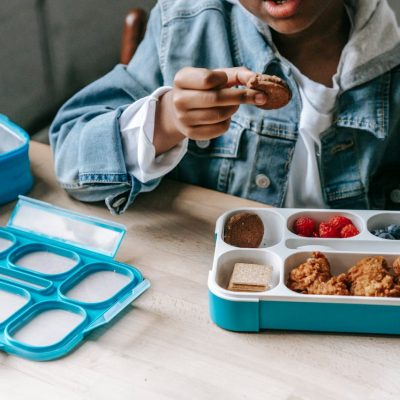A consistent bedtime routine for toddlers is essential. It helps them transition from the excitement of the day to the calmness of bedtime, promoting better sleep and emotional well-being. However, many parents struggle to create a routine that works. This guide provides actionable steps and expert advice to help you establish a bedtime routine that benefits both you and your toddler.
Why Is a Bedtime Routine Important for Toddlers?
A bedtime routine for toddlers is more than just a sequence of activities; it sets the stage for healthy sleep habits. Here’s why it matters:
- Encourages Better Sleep
A predictable routine signals your toddler’s brain that it’s time to wind down, making it easier for them to fall asleep. - Reduces Bedtime Battles
Knowing what to expect can minimize resistance and tantrums, creating a smoother transition to bedtime. - Supports Emotional Development
Routines provide a sense of security and stability, which is crucial for toddlers as they navigate their growing independence. - Improves Parent-Child Bonding
Bedtime rituals, like reading or cuddling, create opportunities for quality time and meaningful connections.
Steps to Create an Effective Bedtime Routine for toddlers
1. Set a Consistent Bedtime
Consistency is key. Choose a bedtime that allows your toddler to get the recommended 11-14 hours of sleep each night, including naps.
- Stick to the same bedtime every day, even on weekends.
- Observe your toddler’s natural sleep cues, such as yawning or rubbing their eyes, to determine the best time.
2. Establish a Wind-Down Period
Begin winding down 30-60 minutes before bedtime. This helps your toddler transition from active play to a calmer state.
- Dim the lights to signal that it’s nighttime.
- Turn off screens, as blue light can interfere with melatonin production.
- Engage in calming activities, such as puzzles or quiet play.
3. Create a Step-by-Step Routine
A clear sequence of activities makes bedtime predictable and comforting. Here’s an example:
- Bath Time: A warm bath can relax your toddler and signal the end of the day.
- Brushing Teeth: Encourage good dental hygiene as part of the routine.
- Put on Pajamas: Let your toddler choose their pajamas to give them a sense of control.
- Story Time: Read a favorite book or sing a lullaby to create a calming atmosphere.
- Goodnight Ritual: Say goodnight to family members, pets, or even stuffed animals.
4. Keep It Short and Sweet
The entire routine should take no more than 30-45 minutes to avoid overstimulating your toddler.
5. Create a Cozy Sleep Environment
Ensure your toddler’s bedroom is conducive to sleep:
- Keep the room dark with blackout curtains or shades.
- Use white noise or a fan to block out distracting sounds.
- Maintain a comfortable room temperature, ideally between 65-70°F (18-21°C).
6. Offer a Transitional Object
Many toddlers find comfort in a security object like a blanket or stuffed animal. It provides reassurance as they fall asleep.
7. Be Patient and Consistent
Toddlers may test boundaries, but consistency is key. Stick to the routine, even when it’s challenging, to help your child understand expectations.
Common Challenges and How to Overcome Them
1. Toddler Refuses to Go to Bed
- Solution: Offer choices within the routine, such as selecting a book or pajamas. Giving a sense of control can reduce resistance.
2. Nighttime Wake-Ups
- Solution: Reassure your toddler without turning on bright lights or engaging in play. Stick to a calm, consistent response.
3. Fear of the Dark
- Solution: Use a dim nightlight and address fears with empathy. Avoid dismissing their concerns.
4. Transitioning from a Crib to a Bed
- Solution: Introduce the new bed as an exciting milestone and keep the bedtime routine consistent during the transition.
Tips for Success
1. Involve Your Toddler
Toddlers love feeling involved. Let them participate in creating the routine, such as picking the order of activities or choosing bedtime stories.
2. Stay Calm and Positive
Your mood sets the tone. If you’re stressed, your toddler may pick up on it, making bedtime more difficult. Stay calm and positive throughout the process.
3. Adjust as Needed
While consistency is important, be flexible when necessary. If a particular activity isn’t working, tweak the routine to better suit your toddler’s needs.
4. Limit Sugar Before Bedtime
Avoid giving your toddler sugary snacks or drinks in the evening, as they can interfere with their ability to wind down.
5. Practice Patience
It may take a few weeks for the routine to fully take hold. Be patient and celebrate small victories along the way.
Benefits of a Successful Bedtime Routine
Establishing a bedtime routine has long-term benefits, including:
- Improved Sleep Quality
A consistent routine helps your toddler sleep longer and more soundly. - Reduced Stress for Parents
Knowing what to expect at bedtime reduces stress and creates a more peaceful household. - Positive Sleep Associations
A routine teaches your toddler healthy sleep habits that they can carry into later childhood. - Stronger Emotional Bonds
Shared bedtime rituals strengthen your relationship with your child, fostering trust and security.
Frequently Asked Questions
1. What age should I start a bedtime routine?
You can start as early as infancy, but it’s never too late to establish a routine. Toddlers, in particular, benefit greatly from structured bedtimes.
2. How do I handle disruptions like travel or illness?
Try to maintain as much of the routine as possible, even in new environments. If disruptions occur, return to the routine as soon as possible.
3. Can screen time be part of the routine?
It’s best to avoid screens in the hour leading up to bedtime. Opt for calming activities like reading or quiet play instead.
4. What if my toddler resists every part of the routine?
Stay consistent but flexible. Focus on maintaining the overall structure while accommodating their preferences within reason.
Conclusion
Creating a bedtime routine for your toddler is a valuable investment in their well-being. With consistency, patience, and a bit of creativity, you can help your little one develop healthy sleep habits that benefit the entire family.
Remember, every child is unique, so don’t be discouraged if it takes time to find what works best. With persistence and love, bedtime can become a peaceful and cherished part of your day.
















